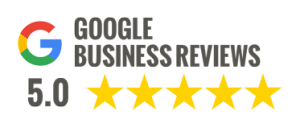CONTENT PILLARS AND HUBSPOT'S METHODS
If you've worked with me, you know that I'm a huge fan of HubSpot. It's a content management system that is perfect for campaign building while leveraging inbound marketing methodologies. Currently, pillar pages are all they're talking about. The reason I'm talking about it is because I'm noticing a few things that really support what Marcom Content by Ashley, LLC ™ is all about – quality content.
Pillar pages are long-form web pages that provide information on a particular topic. They can be used to showcase a brand's expertise and extreme knowledge. These web pages are unique as they are just as long as an e-book. Google loves copy, because that is what tells the robots what your pages are all about. However, users are not going to read all this copy on your page, which is why your presentation of that content is going to be crucial.
GATED CONTENT NEEDS TO OFFER SOMETHING DIFFERENT
Gated content is content that is only given away if the user provides an email address. Now that pillar pages are providing that valuable content, your gated content will need to be even more valuable. It needs to be worthy of giving away that email address. Therefore, it can't be a repeat on what's on that pillar page. It needs to take the conversation even further.
Your gated content should be a call to action on your pillar pages, and it should be strategically placed. This is where pillar pages are different than blog posts. Think of pillar pages as a library of information about a topic. Therefore, your main call to action may not be presented the same way it was in a blog post.
BLOG POSTS ARE NOT EVERYTHING
Most companies use a form of blogging as a big part of their content strategy. However, the world of online content is changing, especially with blogging. While providing quality content has not changed, blogs really can't be promotional, especially now.
Marketers need to be strategic about their content. Blog posts need to be about a specific topic and include those conversational long-tail keywords. Pillar pages align with what searchers expect from quality content. Blog posts will need to be organized by a particular subject and entered into a topic cluster.
Topic clusters are transforming blogging as marketers will need to create more specific pieces of cluster content that will be linking from the pillar page. By nature, blog posts are dated, meaning they are not evergreen. Google looks at the timeliness of your content. Pillar pages are longer than blog posts and are evergreen content, which is why they are more important.
E-LEARNING WILL NEED TO BE MORE ROBUST
For those of you who generate revenue through e-learning, this is going to make your courses even more robust. Just like any product or service, a course on your e-learning center will not get someone at the bottom of the sales funnel without doing some lead nurturing. Users need to understand that you are a thought leader and that they can trust you.
Therefore, if a user lands on your pillar page through a Google keyword search, they will need to see extremely valuable content (say in the form of a white paper) to provide you that email address for lead nurturing. Your online courses will need to show how it breaks that overarching how-to knowledge from your white paper into pure execution.
Before developing your courses, make sure you determine what you really want your audience to know that they are not getting from your pillar pages or your gated content. This is one of the main reasons I say, "It's all about the content." At the end of the day, no matter what deliverable you are creating for your audience, it comes to providing valuable content that is meaningful – not confusing.



